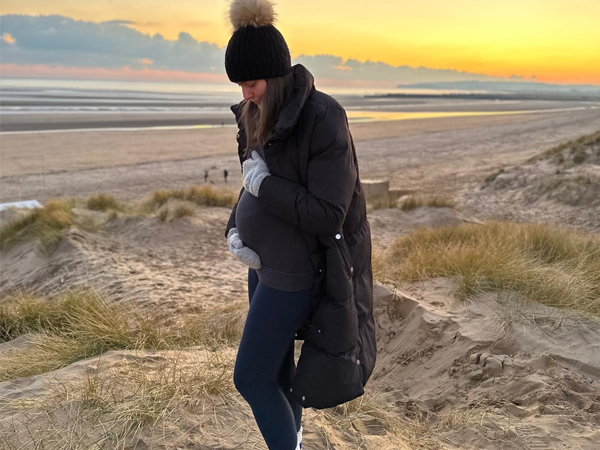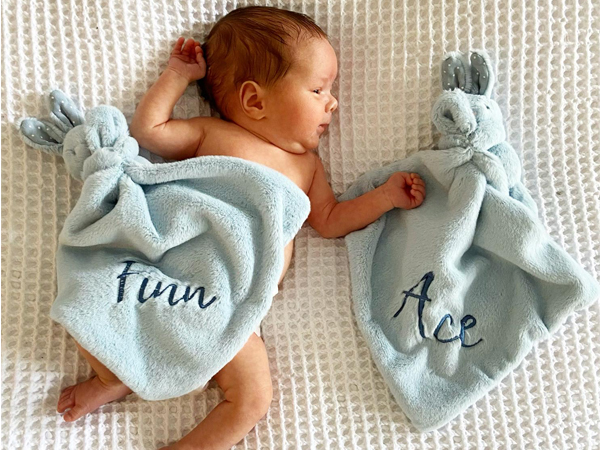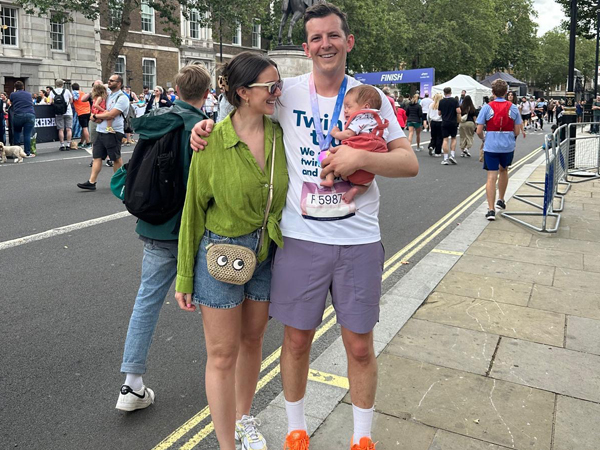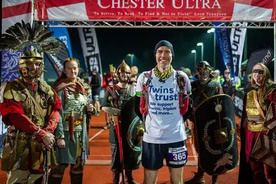10 October 2024
When Samantha and her husband Bart discovered they were expecting identical twin boys, they felt like they had been given the greatest gift.
After seeing their two babies on a scan, the couple were thrilled and began preparing to become parents to multiples. Tragically at 17 weeks, one of the twins, Ace, died due to a condition known as Twin-to-Twin Transfusion Syndrome (TTTS).
This Baby Loss Awareness Week, Bart and Samantha are sharing their story as they honour their late son and help raise awareness of Twins Trust’s Bereavement Service.
Samantha said: “The day before we had the first scan Bart had said ‘imagine if it was twins’. We went for our first scan and we couldn't believe it. The person scanning us said, ‘Oh, there are two in there!’ - we were in pure shock. I was terrified at first but then quickly came around to what an incredible opportunity and blessing it was to have multiples. I was starting to think about all the benefits of having twins - even the matching outfits. We bought two little cricket jumpers. We were beyond excited.”
After discovering they were pregnant, Samantha started researching the risk factors related to a twin pregnancy and learned about TTTS, using the resources on the Twins Trust website. TTTS is a rare but life-threatening condition that affects 10 to 15% of identical twins that share a placenta (monochorionic twins). TTTS can also occur in triplet or higher order pregnancies with monochorionic twins. Specialist laser surgery carried out on the babies in the womb is offered to help save the babies’ lives. At the 15-week scan, consultants diagnosed TTTS and wanted to operate the same day. A decision was made to not operate until Samantha was 16 weeks pregnant.

Samantha said: “The whole weekend after the scan was a nervous waiting game. I wasn’t sure if our babies were going to survive until Monday.”
Bart added: “In anticipation of the surgery, we watched a Netflix documentary - The Surgeon’s Cut: Saving Life Before Birth. I remember thinking - how do parents cope with the conflicting emotions of losing one twin and then having one that lives? - That was our reality 10 days later.”
The TTTS worsened over the weekend, so the surgery went ahead, led by Professor Kypros Nicolaides and another surgeon, Professor Mina Savvidou, at King’s College Hospital, London. Bart said the surgery was difficult but inspiring to witness as they watched the operation take place.
Samantha added: “Although it wasn’t the best of circumstances, the positive was being able to see the babies up close with the camera in the womb. After this surgery both babies had heartbeats - much to our relief. Even with this, we knew the journey wasn’t over. They did as much as they could. We had daily check-ups and scans in the week that followed. It was the most horrifying feeling walking into the hospital every day to check if the heartbeats were still there. I was holding my breath every time.”
Scans later revealed the twins had developed TAPS. Both twins were very ill and one twin was especially anaemic. Another emergency surgery was needed that day.
“Ace was extremely anaemic and we knew his chances of survival were slim. Once TAPS was identified, we had surgery hours later and subsequently Ace received a blood transfusion to the heart.” Samantha said.
After the surgery, Ace’s heart rate remained high, which was a serious concern. There were sadly no additional treatments available, so the couple were sent home. Samantha woke up that night and had a feeling; she knew Ace had passed away. The following day a scan revealed that Ace had died.
One of the hardest parts about losing a baby is losing what could have been
“It was the absolute crush of losing a child. One of the hardest parts about losing a baby is losing what could have been. When you think about twins and the massive impact on your life. That special something was swept away.” she said.
The pregnancy continued and doctors remained worried Finn wouldn’t make it. Bart said: “We were struggling at this point. We had lost Ace and wanted certainty for Finn’s future. We somehow found the strength to keep going and support each other. As time moved on, we were told Finn wouldn’t make it. We were advised to consider terminating the pregnancy as his blood flows were declining.” Discussions followed with multiple consultants and a supportive grief counsellor about the likely outcome.
Miraculously, doctors spotted signs of improvement and recommended that Samantha’s pregnancy continued. Midwives who had been working for 30 years in healthcare said they had never seen such a dramatic improvement. When she was 31 weeks pregnant, Samantha was admitted to hospital and was scanned every six hours over a two-week period. At 33 weeks, Samantha went into labour in the middle of the night and Bart missed Samantha’s call to rush to the hospital. Seven missed calls later and Samantha was on the operating table but luckily Bart made it to the hospital in time.
“Finn was born happy and healthy and Ace was born sleeping. I think there’s a misconception when you have a miscarriage with twins. The reality is that when one twin passes away, you have to carry them throughout the rest of your pregnancy. During the pregnancy I made a point to acknowledge the time I had left with them both, together - it was an extremely difficult but important experience in my life.” Samantha said.

Finn spent four weeks in NICU and a purple butterfly sticker was placed on his cot to show that he was a twinless twin. The couple kept Ace in a special cold cot for a couple of days after the birth, so they could spend time with him and say goodbye.
“I still can’t wrap my head around how difficult that experience was. It was overwhelming. Being confronted with the loss of one twin and then two minutes later, walking to the NICU to see his surviving brother in his incubator - it really was an emotional rollercoaster” Bart said.
“It got to the time when we had to say goodbye to Ace. It must be a mother’s instinct, I couldn’t let him be taken away. It really surprised me as I was very at peace with what had happened. I had to be out of the room when they took Ace away. I had such an emotional and physical draw to this baby,” Samantha said.
When Finn is older, the couple said they will talk to him about his twin brother and share memories. Bart has joined Twins Trust as a trustee and supported the charity by completing a 10k run in July 2023, raising £3,359 in sponsorship.

The couple had a piece of art created when they didn’t think the boys were going to survive. It features two boys with halos above them. The art is hung in Finn’s room and when he points to it, the couple tell him about his brother.
“Despite being a very challenging time in our lives, what has helped me most is talking to people about it, being open and sharing our experience. Samantha has posted on social media about what has happened, as have I, and people’s reactions are overwhelming. That has given us strength. Baby Loss Awareness Week is a great chance to raise awareness, and for us, it’s a part of our story. In the midst of our lowest points, we found it helpful to read and hear about others’ experiences - the good and the bad.” Bart said.
Samantha said Finn is such a fighter and throughout his journey he’s proved everyone wrong. “People who meet Finn, even if for a brief time, often share what character he has. It’s almost like he’s living his life for two,” Bart said.




